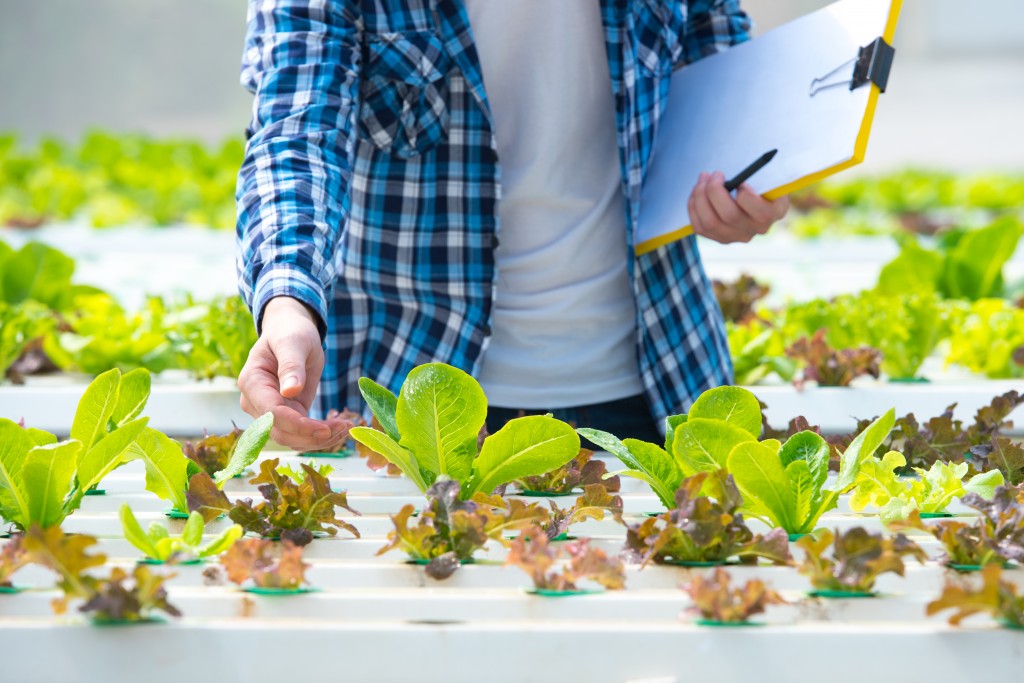Times are tough right now. The whole world is currently stuck indoors and the economy is suffering. Because of everything going on it’s understandable to struggle a bit financially, especially if you’re young and not making a good wage yet. All this means that it’s important to stay healthy and strong, which means that you’re going to need decent nutrition. Unfortunately, fresh food and produce are often more expensive than unhealthy processed stuff.
That said, it’s easy to get fresh vegetables to supplement your diet if you’re willing to get your hands dirty. Indoor gardening is a great way to put a little extra food on the table and it’s a nice stress-relieving hobby too. Not to mention all the aesthetic benefits of having a home full of greenery. Hopefully, this guide can help you pull through these difficult times healthy and strong.
Location, Location, Location
When you’re starting out it’s important to evaluate your living space to see where you’ll be able to fit your little indoor garden. You’ll want to put them in the room that gets the most natural light as possible. If your living space has tinted windows or they don’t let much light in, it might be worth it to have the window glass replaced for something more transparent so that your plants get enough light.
Make sure to look up how much light your plants need to stay healthy. Some plants prefer indirect light, some demand as much light as possible. Do your research, experiment, and don’t be afraid to fail every now and again.
What You’ll Need to Get Started
First of all you need to figure out what kind of vegetables you want to grow. It’s best to start with vegetables that are hardy and easy to grow. You can buy seeds from Walmart for not much at all, so you can look there. If you don’t want to buy seeds, you can always pull them directly out of the vegetables you’re eating and search for how to prepare them for planting online.
You don’t need much space to get started planting, so 2-foot plastic or metal tubs will be fine, especially for things like herbs or smaller vegetables. There’s no need to buy expensive garden soil either since you can just go outside to a public area and grab a bag full of dirt to plant your crops in. This isn’t an expensive hobby at all, most of what you need can be improvised or scavenged for, just be creative.

Growing Roots
When planting your vegetables it’s best to remember to space them out adequately to give each one enough room to grow. All your plants will need a good supply of light and water so crowding them to save space in the planter will be counterproductive at the least. If you want to get the most nutritious soil possible for your plants without having to shell out much additional money, it’s worth it to learn how to make your own compost.
When done right, composting doesn’t smell bad and provides you with some of the best planting soil you can get. Your plants will love it, and it’s a great way to use your kitchen waste to provide you and your plants with extra nutrition.
Passive Planting
If you’re too busy to actively take care of your plants you can do a little indoor gardening. Setting up a self-watering pot works, you just need to punch small holes in a bottle, and let the water slowly bleed into the soil. Putting your plants in a high-humidity environment like your bathroom will also help keep them hydrated without much effort.
Push comes to shove, you can always just plant herbs and vegetables that don’t need daily watering in the first place. You still get the benefit of supplementing your pantry and it requires much less effort. Just don’t neglect them entirely and you’ll have plenty of fresh herbs to put on your dishes.
Final Tips
How often you’ll be able to harvest your plants is largely based on where they’re growing. Flowering and maturing take a lot of energy for plants so they’ll only choose to do it when the conditions are just right for them. Don’t forget to do your research and see what plants will flourish most in your living conditions.
If you’ve got a surplus of vegetables or just want to save some for later, then it might also be worth learning how to preserve them too. It’s easy to do in most cases and can give you some tasty treats like homemade kimchi to stock your fridge with. Have fun with your little indoor garden and flex your green thumb. Who knows, you might find that you’ve got a flair for it and you might want to set up a more serious garden in the future. Happy planting!